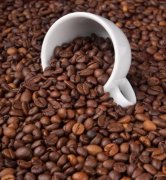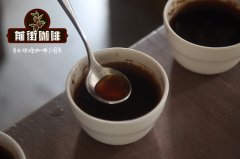What is the problem that leads to the continuous and stable production of Italian coffee?

No barista will ignore the effect of "extraction temperature" on coffee, but few people realize that the extraction temperature is actually determined by "water temperature" and "coffee powder temperature".
In the daily operation, it is difficult for us to have the time and energy to accurately measure the temperature of coffee powder. However, it has become a consensus among baristas that excessive heat will cause the aroma of coffee powder to volatilize ahead of time. In addition, there are also many views that heat energy will cause coffee oil to seep to the surface and cause caking problems.
But these are the results of coffee powder overheating, in fact, the temperature of coffee powder itself will directly affect the extraction process and results.
The truth about the temperature of coffee powder
To explore the effect of coffee powder temperature, Dr Monika Fekete, from the Coffee Science Laboratory in Melbourne, Australia, conducted an in-depth study.
Under the quantitative conditions of carbon dioxide emissions, extraction water, extraction water temperature and coffee cup temperature, Dr. Fekete conducted grouping experiments on coffee powders that were ground and mixed several times and stored at-13 °C, 8 °C, 21 °C, 45 °C and 55 °C, respectively.
The experimental results show that the temperature of coffee powder has no significant effect on coffee liquid weight, extraction rate and TDS, but has a positive correlation with coffee liquid temperature. With the increase of the temperature of coffee powder, the temperature of the final coffee liquid also increases, and vice versa.
The really interesting flow rate is non-linearly related to the temperature of coffee powder.
The flow velocity decreases with the increase of temperature from-13 °C to 8 °C, increases with the increase of temperature from 8 °C to 45 ℃, and decreases with the increase of temperature from 45 °C to 55 °C.
As a result of further experiments, the doctor finally confirmed that the viscosity of the coffee liquid was the main reason that affected the flow rate.
The lower the viscosity of coffee liquid is, the faster the flow rate is, and the increase of temperature can effectively reduce the viscosity of coffee liquid, which explains why the thickness of Italian concentrated alcohol is more obvious at low temperature.
Chain reaction of temperature
In daily operation, the temperature of ground coffee powder is about 10 ℃ higher than that of cooked beans. On the other hand, the temperature changes in the grinding environment, such as the rotational speed of the cutter head and continuous working hours, make the coffee powder constantly change between 25 °C and 50 °C.
The obvious time for this change is the peak period of visitors. During the peak period, the flow rate of Italian concentration will also be significantly accelerated. When the peak is over, the flow rate will gradually return to the state of dial-in in the morning.
Sometimes in order to solve the situation of excessive extraction, baristas have to temporarily adjust the grinding scale to make up for it, but the changes in the solubility of compounds at different temperatures have had an irreversible effect on the product.
And this is just one of a series of chain reactions. When the bean grinder begins to heat up, the diameter distribution of coffee powder will change, and those traditional quantitative bean grinders that use volume, timing and other methods will even produce changes in powder quantity, which greatly reduces the stability of the product.
Control the temperature of the bean grinder
Since the heating in the grinding process is inevitable, in order to ensure the consistency of the product, we really need to pay attention to the stability of the temperature change in the grinding environment rather than the temperature itself, which is one of the original intentions of Victoria Arduino to create MYTHOS2.
Variable speed grinding function to help you explore the flavor of coffee
MYTHOS2 uses 85mm nano-coated titanium alloy cutterhead and a powerful motor with built-in variable speed grinding function, which ensures efficiency and life, reduces heat with a stable rotational speed, and allows baristas to explore the flavor of the building.
Outside the grinding chamber, we have carefully designed an aluminum heat dissipation structure to greatly enhance the heat dissipation performance; the unique Clima Pro 2.0 temperature control technology ensures a stable temperature change in the grinding environment, regardless of peak or off-peak conditions, and even gives baristas the freedom to choose from 30 ℃ to 50 ℃ to match different brewing schemes.
The built-in Gravitiech fixed weight technology directly measures the weight of coffee powder in the brewing handle, which solves the uneven powder output caused by the traditional quantitative grinding, and can effectively improve the quality consistency of the bar cup with the same black hawk coffee machine equipped with Gravitiech.
When the extraction water temperature, coffee powder temperature and bean grinder temperature are all under the control of the barista, what may really affect the product is the lasting enthusiasm for coffee.
Important Notice :
前街咖啡 FrontStreet Coffee has moved to new addredd:
FrontStreet Coffee Address: 315,Donghua East Road,GuangZhou
Tel:020 38364473
- Prev

Community Crop Program for Palm Tree and Tucano Estate LPET Lactic Acid Treatment
What is the Palm Tree & Tucson Community Crop Program? Neighbor Crops for Palm Trees and Big-Mouth Birds is a bit like a social program that assists, educates and raises the income of neighboring smallholder farmers. It can witness the improvement of coffee and quality of life for smallholder farmers. It is very meaningful. Palms partnered with Bigmouth and smallholder farmers in the area adjacent to the estate to provide farmers who worked with LPET with a grant.
- Next

The coffee cup test should pay attention to these six details how to ensure the consistency of coffee cup measurement.
If each cup of coffee sample on the cup test table actually has a different degree of extraction, should you trust your cup test notes? For all those who want to buy, sell raw coffee beans, or roast coffee, cup testing is an indispensable tool. It is used to compare batches, to identify flavor characteristics, to identify defects in raw and cooked beans, to make purchasing decisions, and to decide where to plant.
Related
- Beginners will see the "Coffee pull flower" guide!
- What is the difference between ice blog purified milk and ordinary milk coffee?
- Why is the Philippines the largest producer of crops in Liberia?
- For coffee extraction, should the fine powder be retained?
- How does extracted espresso fill pressed powder? How much strength does it take to press the powder?
- How to make jasmine cold extract coffee? Is the jasmine + latte good?
- Will this little toy really make the coffee taste better? How does Lily Drip affect coffee extraction?
- Will the action of slapping the filter cup also affect coffee extraction?
- What's the difference between powder-to-water ratio and powder-to-liquid ratio?
- What is the Ethiopian local species? What does it have to do with Heirloom native species?

